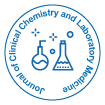

Sivasooriar Sivaneson, Gobhy Ramaloo, Martin Giddy, Seelan George und Thuhairah Abdul Rahman
One measure of efficiency in a diagnostic laboratory is promptness in producing results. With this in mind, turnaround time (TAT) has become a conspicuous indicator reflecting a lab’s efficiency. Delays in TAT in a high throughput laboratory such as Quantum Diagnostics were identified in July 2017.
Aim: This study aims to investigate the root cause of the delay and develop corrective actions to improve work processes that could potentially improve TAT.
Materials and Method: Urgent and non-urgent tests TAT which includes H. pylori and EBV tests alongside routine biochemistry were collected from July 2017 till January 2019. Prior to August 2017, samples were run for biochemistry tests on Cobas 8000 (Roche Diagnostics, Germany) prior to processing serology H. pylori (Immulite 2000, Siemens) and EBV (Snibe, BMS) tests. Delayed TAT was identified to originate from a holdup at the biochemistry section. Work processes were then reorganized to prioritize serology tests first, where samples were loaded on respective analyzers and transferred to the biochemistry analyzer immediately upon aspiration of samples. In addition, installation and activation of 1) p512 pre-analytical system, 2) two Cobas 8000 modules and upgradation and installation of additional endocrine modules was done to improve throughput time.
Results: Percentage TAT achieved for urgent and non-urgent tests were 39.75% and 60.57% respectively in July of 2017. Subsequent TAT achieved in the following months from September 2017 to January 2019 has demonstrated significant improvement in QI which the percentage TAT achieved for urgent and non-urgent was 95.5% and 90.0% respectively in January of 2019.
Conclusion: Lab indicators are important to identify poor work processes and formulating plans to overcome them improve TAT significantly.